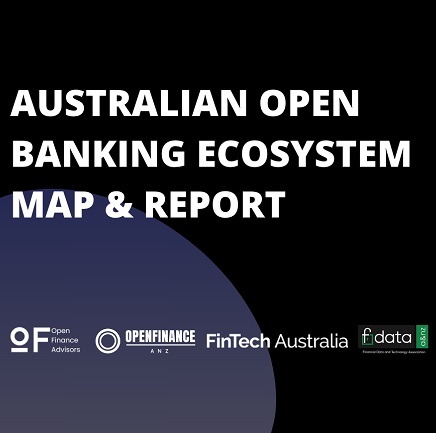
Open Banking in Australia is ready to take off and adoption will accelerate when the data is complete
Open Finance Advisors launches the first deep dive analysis and map of the Australian Open Banking Ecosystem, in collaboration with FinTech Australia, FDATA ANZ and Open Finance ANZ.
At close to two and a half years into the Australian open banking journey, it is clear we are getting ready to take off. There are now 95% of ADIs sharing data (114 Brands) with 88 Data Recipients (280% change y/y) of all access model types.
Data reliability and completeness issues are, however, holding open banking back from really taking off. The ACCC rectification schedule identified 70% of Data Holders did not comply with the implementation timelines and 90% of ADIs still have outstanding rectification works. 4 ADIs are still not yet actively sharing data.
Brenton Charnley, CEO and Founder of Open Finance Advisors said, “It is wonderful to see new sectors being designated as data holders, energy data sharing going live and action initiation on the horizon. But we haven’t yet completed the first phase of open banking. We have high consumer bank coverage, but for the CDR to really take off it also needs to be reliable (speed, completeness and accuracy of data). This is the launchpad of a strong open banking operating system. Ultimately, data holders need to be accountable to comply with the Rules, but also respond quickly to rectification work and tickets so the system is reliable.”
Of the 88 data recipients, fintechs are leading the charge, making up close to 40% of data recipients. Further, technology intermediaries like Adatree, Basiq, Frollo and Envestnet | Yodlee are playing a key role in enabling the growth of the Consumer Data Right making up 15% of accredited participants. There are 51 CDR Representatives appointed by accredited intermediaries making up 64% of all data recipients.
Rehan D’Almeida, General Manager of FinTech Australia said, “This report is not only a timely reminder of where we are at with the Open Banking rollout going into its third year, but also a crucial roadmap for industry on what needs to be done to progress it. Enhancing the customer experience and ensuring consumers fully benefit from the technology remains a core component of the CDR rollout, and we are heartened to hear that the sector is still united in this goal.”
“We would like to thank the government for working with us and the broader sector to-date in ushering reforms that expand the remit of the CDR and its positive impact on consumers. Much of the work now lies in compliance and ensuring all parties do their part in furthering the CDR’s rollout.”
“Fintech platforms, powered by the CDR, are another means of tackling the cost-of-living pressures hitting Australian households. Our hope is that with further collaboration, the finance sector will be delivering this innovation and its impact to consumers soon and right when they need it most.”
Consumer adoption is the next key focus area, which can be measured by the number of customers that have consented to share data through the Consumer Data Right.
Mat Mytka, Regional Director for FDATA ANZ said, “We need to measure the things that matter in the CDR. The number of consumer consents are a good proxy and interim success measure of the CDR until we can accurately measure consumer and SMB outcomes. They get closer to measuring utility and as a community we can move beyond API calls and towards meaningful metrics.”
The ecosystem map and 30 page report identifies the participants of the Australian open banking ecosystem. This includes Data Holders, Data Recipients, usage of new access models, Government bodies, advocacy groups and service providers. It also looks deeper into the participant and usage statistics beyond those published on the ACCC’s performance dashboard.


